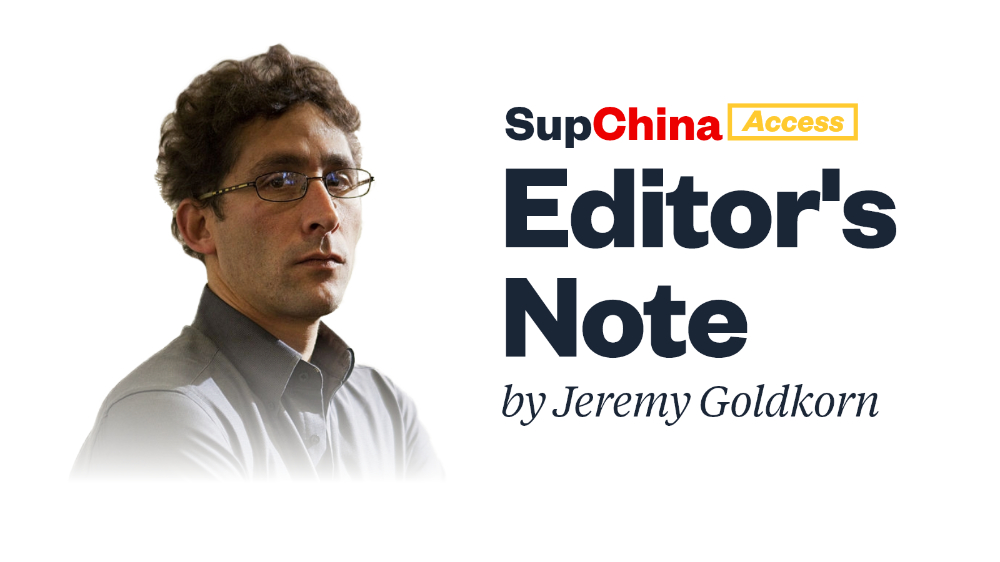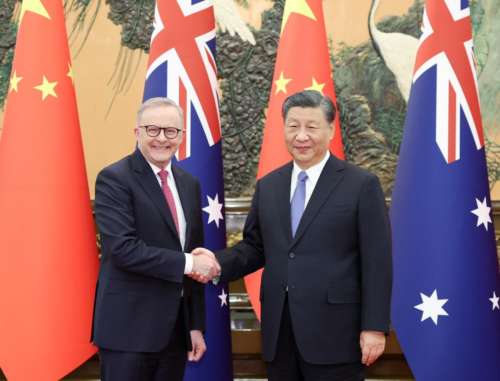Editor’s note for Tuesday, December 29, 2020
A note from the editor of today's The China Project Access newsletter.

My thoughts today:
Is Biden taking a slightly harder edge on China than some expected him to a month ago? In a speech yesterday, the U.S. President-elect said:
And as we compete with China and hold China’s government accountable for its abuses on trade, technology, human rights, and other fronts, our position will be much stronger when we build coalitions of like-minded partners and allies to make common cause with us in defense of our shared interests and values.
We are almost 25 percent of the global economy on our own, but together with our democratic partners, we more than double our economic leverage.
On any issue that matters to the U.S.-China relationship — from pursuing a foreign policy for the middle class, including a trade and economic agenda that protects American workers, our intellectual property, and the environment — to ensuring security and prosperity in the Indo-Pacific region, to championing human rights — we are stronger and more effective when we are flanked by nations that share our vision for the future of our world.
Jennifer Rubin, a columnist at the Washington Post, interprets this language as going beyond the “restorationist” impulse of some foreign policy thinkers in the Democratic Party, and more in line with a “reformist” philosophy that pushes for fundamental change in U.S. foreign policy, with China as the defining challenge. (The “restorationist” and “reformist” distinction is language that Rubin cites from Thomas Wright at the Brookings Institution.)
See also, on The China Project earlier this month: No immediate changes to U.S. China policy under Biden, including tariffs.
Biden is still expected to be less overtly aggressive and unilateral in challenging China, but the formation of a coalition of countries with more than 50% of global economic output to pressure China would be unprecedented.
The U.S. might only have one opportunity left to amass such a coalition, based on apparent mid- and post-pandemic economic trends.
- China is projected to be the only major world economy to grow in 2020. According to the International Monetary Fund, the Chinese economy is forecast to grow by 1.9%, while the U.S. economy will shrink by 4.4% and the Eurozone will contract by 8.3%, per the Wall Street Journal.
- Next year, China’s economy may grow by as much as 8.2%, according to a survey by Nikkei.
- By 2028, the Chinese economy will surpass the U.S. economy, according to new projections by the U.K.-based Centre for Economics and Business Research, the BBC reports.
However, has Europe already moved on? According to Deutsche Welle, the EU and China have finished negotiations on an investment deal, called the Comprehensive Agreement on Investments (CAI), and the “official signing is expected on December 30.”
- A view from Washington: “It’s just mind-boggling that the EU would even consider rushing to agree an investment pact with Beijing weeks before Biden takes office after claiming for several years that they wanted transatlantic cooperation on China,” Tom Wright of Brookings told the Guardian.
- A view from Europe, via an unnamed EU diplomat in the FT: “It will put EU and U.S. at the same level to then discuss jointly how to handle China… The U.S. has a deal with China and we don’t — it’s uneven at this moment. We are lagging the U.S.”
- A view from China, via a Chinese government adviser in the SCMP: “China-EU cooperation matters to Beijing to counter the U.S. blockade… Domestically a deal would help stabilize foreign investment, while externally China does not want to see the formation of an anti-China alliance.”
Our word of the day is International Labour Organization (国际劳工组织 guójì láogōng zǔzhī), a UN agency whose conventions against forced labor China has reportedly vowed to “make continued and sustained efforts” to ratify as part of the CAI.
—Lucas Niewenhuis, Newsletter Editor (lucas@thechinaproject.com)






